---------- Forwarded message ----------
From: john reed <reed2link@gmail.com>
Date: Mon, Jul 12, 2010 at 10:20 AM
Subject: [** MAOIST_REVOLUTION **] The path toward cease-fire and the assassination of Maoist leader Cherukuri Rajkumar alias Azad
To: maoist_revolution <MAOIST_REVOLUTION@yahoogroups.com>
The Third Letter: The Maoist and the undelivered missive. Azad's death
is no man's peace
From Tehelka Magazine, Vol 7, Issue 28, Dated July 17, 2010
by TUSHA MITTAL
SOCIAL ACTIVIST Swami Agnivesh sits in his room at 7 Jantar Mantar,
perplexed, battling a strange sense of guilt. For the past few months,
he has been mediating a backroom dialogue between the Government of
India and the CPI(Maoist). Since May 2010, Agnivesh had facilitated
the exchange of two letters between the warring parties. On June 26,
he dispatched a third letter to top Maoist leader Cherukuri Rajkumar
alias Azad. "The peace process was at a critical juncture. A very
positive response was expected,"
Agnivesh told TEHELKA. "I was to receive a date from which talks could
begin." Much to his horror, what he received instead was news that
Azad — the receipent of his letter — had been killed in the forests of
Andhra Pradesh. "It is possible that Azad let his guard down because
of my last letter," Agnivesh said. "It is a great loss for all of us,
including the government. Azad was a key person and most favourably
disposed to the peace process. We must ensure that his death does not
derail the possibility of peace."
But the Home Ministry has a different view. "I don't think this is a
setback to the peace process. We had not received any positive
response from CPIMaoist," Home Secretary GK Pillai told TEHELKA.
For every conversation that leaps us forward, there are strings that
pull us back. The rhetoric of Maoists killing 27 CRPF men two days
before Azad's death is one such shackle. Reading that attack as an
indication that the Maoists were not serious about peace would be
misleading. The on-going backroom dialogue was aimed at deciding a
date from which a mutual cessation of violence would begin. Until such
a date was arrived at, it was understood the violence would continue
from both sides. And it did. In the weeks leading up to Azad's death —
five maoists were killed in Lalgarh, several maoist sympathisers were
arrested, and adiviasi women continued to be raped by the forces. The
Maoists too continued to kill.
The reason why Azad's death must be seen outside this cycle of
violence is because Azad was a key and unlikely salesman of truce,
carrying Swami Agnivesh — and by default P Chidam - baram's message to
comrades in Dandakaranya. "Azad was building consensus for a ceasefire
within the party. He had our full mandate. Now the government has
shown it was never interested in talks," Usendi, Maoist spokesperson
of the Dandakaranya Special Zone Committee, told TEHELKA.
While the first two letters have been made public, the third letter
remains confidential. Sources have told TEHELKA of its contents — and
it indicates how close both parties were to the possibility of
dialogue. That is what makes Azad's death significant, almost
poignant. For the hundreds of adivasis and soldiers trapped in this
war, it means a bleaker, bloodier future. Already the Maoists have
vowed revenge when they could have been inching toward peace.
"This is a fascist State dreaming that peace will come back by
liquidating people," says G Haragopal, one of the mediators in the
2004 Andhra talks. "Such reactions show an insecure and unconfident
State." Azad's killing in a gunbattle with the police in the remote
forests of Andhra Pradesh, was hailed as one of the biggest catches
since the goverment launched a joint-offensive against the Maoists in
2009. Azad was No 3 in the Maoist ranks, a politburo member, Central
Committee spokesperson, and a close aide to Maoist chief Ganapathi.
The son of a hotel owner, Azad, 55, belonged to an upper caste family
from Krishna district in Andhra Pradesh. An engineering student in
Warangal, Azad earned two MTech degrees and helped found the
Revolutionary Students Union. Jailed during the Emergency, he went
underground shortly after.
ON JULY 2, Adilabad Superintendent of Police P. Promod Kumar claimed
the police received intelligence inputs about a group of 25 to 30
Maoists moving around in the Adilabad forest area, near the
Maharashtra border. A police team encountered the rebels in the hilly
terrain near Sarkepally village. "Our team cautioned them to
surrender, but they came under fire, forcing them to retaliate," he
said. According to the police, the encounter began around 11:30 pm on
July 1 and lasted till 2 am on July 2. Later they recovered two bodies
— Azad and an unidentified man.
Several details have emerged since, that counter the police version of
events. Villagers in Sarkepally have said they did not hear gunshots
on the night of July 1. The CPI (Maoist) has also released statements
alleging the encounter was fake. "Azad was picked up from Nagpur. He
had no reason to be in Adilabad. Azad was to meet our man at a cinema
hall in the city on July 1. Our man waited but he never showed up,"
Usendi said.
Swami Agnivesh
A brewing controversy surrounding the second body further strengthens
the theory of a fake encounter. After photos of the bodies appreared
in Andhra newspapers, a family from Uttarakhand claimed the second man
wasn't a Maoist but a freelance journalist called Hem Chandra Pandey.
Hailing from Dewaltal town of Pithoragarh district of Uttarakhand,
Pandey had been based in Delhi since 2007. "My husband left Delhi on
June 30. He had gone to Nagpur for an assignment and was expected back
on July 2," said his wife Babita Pandey. Pandey's family claims he
wrote for Hindi newspapers like Nai Dunia, Rastriya Sahara, Dainik
Jagran. Editors of all these papers have denied this, but TEHELKA has
clippings of his work published under the name Hemant Pandey.
Since early 2010, he had been working for an in-house corporate
magazine called Chetna, at Delhi Assam Railways Corporation Limited.
Pandey's colleagues at DARCL describe him as a quiet, helpful man who
attended office regularly. Significantly, his colleagues say they saw
Pandey last on July 1 — the same day the police claim he was killed in
Adilabad. "He attended office for the first half on July 1 and then
asked for leave," office-in charge Abhishek Ranjan said. Another
colleague who sits near Pandey said he saw him until lunch. TEHELKA
has also learned that Pandey's supervisor has a text message sent on
July 1 saying he would be in for half the day.
However, Pandey's family continues to believe he left Delhi on June 30
by train. Any proof that Pandey was in office on July 1 is crucial
because it could blow holes in the police version. It would be
extremely unlikely for someone to be waging guerilla warfare in the
Andhra Pradesh jungles by night, if they were in Delhi until 2 pm the
same day.
TO UNDERSTAND the significance of what happened on the night of July
1, one has rewind to Agnivesh, to understand why he feels that sense
of guilt.
On May 6-8, Agnivesh and several other activists marched through
Raipur and Dantewada asking for an end to violence. On May 11,
Chidambaram wrote to Agnivesh to clarify the government's position.
The key to talks lay in a specific date from the Maoists. "On the
specified date (say, June 1), we would expect that the CPI(Maoist)
will stop all violent activities," Chidambaram wrote. "We would
closely observe whether the CPI(Maoist) will maintain the position of
"no violence" for 72 hours. It goes without saying that, during the
said period of 72 hours, the security forces will not conduct any
operations against the CPI(Maoist). It is our hope that talks will
begin during [that] period."
The letter was significant because it was the first time the
government had shown its willingness for a mutual halt of violence,
meeting a key demand of the Maoists. In a signed response dated May
31, Azad also indicated his party's willingness for talks. "Our Party
desires peace sincerely in the interests of the lakhs of adivasis who
are being cruelly crushed," he said. He mocked Chidambaram's 72-hour
figure as a joke. "If the government is serious it should speak in
terms of mutual ceasefire, for a longer period of time, and spell out
the government's stand on fulfilling the minimum requisites like
release of leaders and lifting the ban on the CPI (Maoist)." Azad also
asked the government to "stop its efforts to escalate the war,
including the measure of calling back all the paramilitary forces
deployed in war zones."
'Azad was going to give a date for mutual ceasefire. He may have let
his guard down because of my letter. I am in shock'
SWAMI AGNIVESH
Agnivesh relayed the letter to Chidambaram. On the basis of his
discussion with the home minister, Agnivesh wrote a third letter to
Azad on June 26 clarifying questions raised by the Maoists. The third
letter clarified that Chidambaram's insistence on 72 hours did not
mean that ceasefire would only last for three days. Rather,
Chidambaram wanted a specific date from which 72 hours of "mutual
cessation of hostilities" would begin. During that period, he would
invite the Maoists for talks and initiate a mutual ceasefire
agreement.
Agnivesh's third letter asked the Maoists for the most operative part
of the process — a date from which the 72 hours of no violence would
commence. Had Azad reached his destination, perhaps that date of peace
would be on its way to New Delhi.
WRITER'S EMAIL: TUSHA@TEHELKA.COM
From Tehelka Magazine, Vol 7, Issue 28, Dated July 17, 2010
From: john reed <reed2link@gmail.com>
Date: Mon, Jul 12, 2010 at 10:20 AM
Subject: [** MAOIST_REVOLUTION **] The path toward cease-fire and the assassination of Maoist leader Cherukuri Rajkumar alias Azad
To: maoist_revolution <MAOIST_REVOLUTION@yahoogroups.com>
The Third Letter: The Maoist and the undelivered missive. Azad's death
is no man's peace
From Tehelka Magazine, Vol 7, Issue 28, Dated July 17, 2010
by TUSHA MITTAL
SOCIAL ACTIVIST Swami Agnivesh sits in his room at 7 Jantar Mantar,
perplexed, battling a strange sense of guilt. For the past few months,
he has been mediating a backroom dialogue between the Government of
India and the CPI(Maoist). Since May 2010, Agnivesh had facilitated
the exchange of two letters between the warring parties. On June 26,
he dispatched a third letter to top Maoist leader Cherukuri Rajkumar
alias Azad. "The peace process was at a critical juncture. A very
positive response was expected,"
Agnivesh told TEHELKA. "I was to receive a date from which talks could
begin." Much to his horror, what he received instead was news that
Azad — the receipent of his letter — had been killed in the forests of
Andhra Pradesh. "It is possible that Azad let his guard down because
of my last letter," Agnivesh said. "It is a great loss for all of us,
including the government. Azad was a key person and most favourably
disposed to the peace process. We must ensure that his death does not
derail the possibility of peace."
But the Home Ministry has a different view. "I don't think this is a
setback to the peace process. We had not received any positive
response from CPIMaoist," Home Secretary GK Pillai told TEHELKA.
For every conversation that leaps us forward, there are strings that
pull us back. The rhetoric of Maoists killing 27 CRPF men two days
before Azad's death is one such shackle. Reading that attack as an
indication that the Maoists were not serious about peace would be
misleading. The on-going backroom dialogue was aimed at deciding a
date from which a mutual cessation of violence would begin. Until such
a date was arrived at, it was understood the violence would continue
from both sides. And it did. In the weeks leading up to Azad's death —
five maoists were killed in Lalgarh, several maoist sympathisers were
arrested, and adiviasi women continued to be raped by the forces. The
Maoists too continued to kill.
The reason why Azad's death must be seen outside this cycle of
violence is because Azad was a key and unlikely salesman of truce,
carrying Swami Agnivesh — and by default P Chidam - baram's message to
comrades in Dandakaranya. "Azad was building consensus for a ceasefire
within the party. He had our full mandate. Now the government has
shown it was never interested in talks," Usendi, Maoist spokesperson
of the Dandakaranya Special Zone Committee, told TEHELKA.
While the first two letters have been made public, the third letter
remains confidential. Sources have told TEHELKA of its contents — and
it indicates how close both parties were to the possibility of
dialogue. That is what makes Azad's death significant, almost
poignant. For the hundreds of adivasis and soldiers trapped in this
war, it means a bleaker, bloodier future. Already the Maoists have
vowed revenge when they could have been inching toward peace.
"This is a fascist State dreaming that peace will come back by
liquidating people," says G Haragopal, one of the mediators in the
2004 Andhra talks. "Such reactions show an insecure and unconfident
State." Azad's killing in a gunbattle with the police in the remote
forests of Andhra Pradesh, was hailed as one of the biggest catches
since the goverment launched a joint-offensive against the Maoists in
2009. Azad was No 3 in the Maoist ranks, a politburo member, Central
Committee spokesperson, and a close aide to Maoist chief Ganapathi.
The son of a hotel owner, Azad, 55, belonged to an upper caste family
from Krishna district in Andhra Pradesh. An engineering student in
Warangal, Azad earned two MTech degrees and helped found the
Revolutionary Students Union. Jailed during the Emergency, he went
underground shortly after.
ON JULY 2, Adilabad Superintendent of Police P. Promod Kumar claimed
the police received intelligence inputs about a group of 25 to 30
Maoists moving around in the Adilabad forest area, near the
Maharashtra border. A police team encountered the rebels in the hilly
terrain near Sarkepally village. "Our team cautioned them to
surrender, but they came under fire, forcing them to retaliate," he
said. According to the police, the encounter began around 11:30 pm on
July 1 and lasted till 2 am on July 2. Later they recovered two bodies
— Azad and an unidentified man.
Several details have emerged since, that counter the police version of
events. Villagers in Sarkepally have said they did not hear gunshots
on the night of July 1. The CPI (Maoist) has also released statements
alleging the encounter was fake. "Azad was picked up from Nagpur. He
had no reason to be in Adilabad. Azad was to meet our man at a cinema
hall in the city on July 1. Our man waited but he never showed up,"
Usendi said.
Swami Agnivesh
A brewing controversy surrounding the second body further strengthens
the theory of a fake encounter. After photos of the bodies appreared
in Andhra newspapers, a family from Uttarakhand claimed the second man
wasn't a Maoist but a freelance journalist called Hem Chandra Pandey.
Hailing from Dewaltal town of Pithoragarh district of Uttarakhand,
Pandey had been based in Delhi since 2007. "My husband left Delhi on
June 30. He had gone to Nagpur for an assignment and was expected back
on July 2," said his wife Babita Pandey. Pandey's family claims he
wrote for Hindi newspapers like Nai Dunia, Rastriya Sahara, Dainik
Jagran. Editors of all these papers have denied this, but TEHELKA has
clippings of his work published under the name Hemant Pandey.
Since early 2010, he had been working for an in-house corporate
magazine called Chetna, at Delhi Assam Railways Corporation Limited.
Pandey's colleagues at DARCL describe him as a quiet, helpful man who
attended office regularly. Significantly, his colleagues say they saw
Pandey last on July 1 — the same day the police claim he was killed in
Adilabad. "He attended office for the first half on July 1 and then
asked for leave," office-in charge Abhishek Ranjan said. Another
colleague who sits near Pandey said he saw him until lunch. TEHELKA
has also learned that Pandey's supervisor has a text message sent on
July 1 saying he would be in for half the day.
However, Pandey's family continues to believe he left Delhi on June 30
by train. Any proof that Pandey was in office on July 1 is crucial
because it could blow holes in the police version. It would be
extremely unlikely for someone to be waging guerilla warfare in the
Andhra Pradesh jungles by night, if they were in Delhi until 2 pm the
same day.
TO UNDERSTAND the significance of what happened on the night of July
1, one has rewind to Agnivesh, to understand why he feels that sense
of guilt.
On May 6-8, Agnivesh and several other activists marched through
Raipur and Dantewada asking for an end to violence. On May 11,
Chidambaram wrote to Agnivesh to clarify the government's position.
The key to talks lay in a specific date from the Maoists. "On the
specified date (say, June 1), we would expect that the CPI(Maoist)
will stop all violent activities," Chidambaram wrote. "We would
closely observe whether the CPI(Maoist) will maintain the position of
"no violence" for 72 hours. It goes without saying that, during the
said period of 72 hours, the security forces will not conduct any
operations against the CPI(Maoist). It is our hope that talks will
begin during [that] period."
The letter was significant because it was the first time the
government had shown its willingness for a mutual halt of violence,
meeting a key demand of the Maoists. In a signed response dated May
31, Azad also indicated his party's willingness for talks. "Our Party
desires peace sincerely in the interests of the lakhs of adivasis who
are being cruelly crushed," he said. He mocked Chidambaram's 72-hour
figure as a joke. "If the government is serious it should speak in
terms of mutual ceasefire, for a longer period of time, and spell out
the government's stand on fulfilling the minimum requisites like
release of leaders and lifting the ban on the CPI (Maoist)." Azad also
asked the government to "stop its efforts to escalate the war,
including the measure of calling back all the paramilitary forces
deployed in war zones."
'Azad was going to give a date for mutual ceasefire. He may have let
his guard down because of my letter. I am in shock'
SWAMI AGNIVESH
Agnivesh relayed the letter to Chidambaram. On the basis of his
discussion with the home minister, Agnivesh wrote a third letter to
Azad on June 26 clarifying questions raised by the Maoists. The third
letter clarified that Chidambaram's insistence on 72 hours did not
mean that ceasefire would only last for three days. Rather,
Chidambaram wanted a specific date from which 72 hours of "mutual
cessation of hostilities" would begin. During that period, he would
invite the Maoists for talks and initiate a mutual ceasefire
agreement.
Agnivesh's third letter asked the Maoists for the most operative part
of the process — a date from which the 72 hours of no violence would
commence. Had Azad reached his destination, perhaps that date of peace
would be on its way to New Delhi.
WRITER'S EMAIL: TUSHA@TEHELKA.COM
From Tehelka Magazine, Vol 7, Issue 28, Dated July 17, 2010
--
Palash Biswas
Pl Read:
http://nandigramunited-banga.blogspot.com/



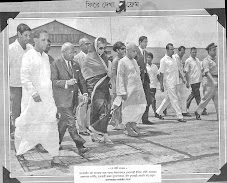



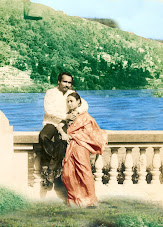






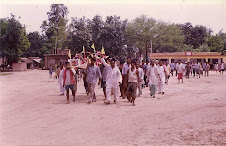

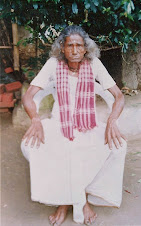
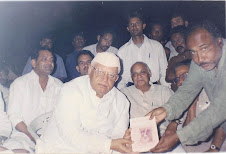
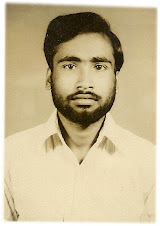



No comments:
Post a Comment